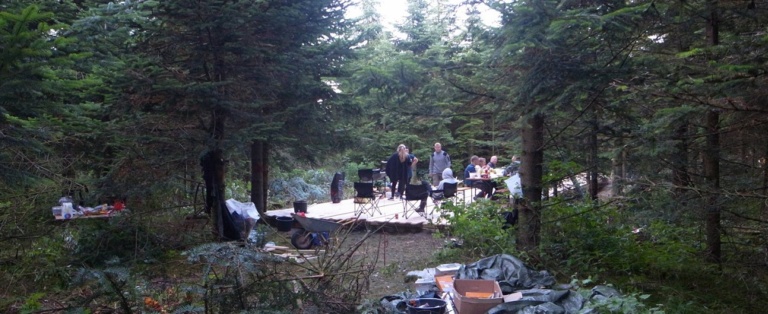Historical garden and living studio
Nestled between the art library and the Schools of Visual Arts’ workshops at Charlottenborg you will find the beautiful Sculptor’s Garden. Like the historic architecture that surrounds it, the garden is a relic from Charlottenborg’s past status as residence to two of the most powerful figures of the Danish Baroque era: Ulrik Frederik Gyldeløve, governor of Norway, who was followed by the dowager queen Charlotte Amalie, after whom the building is named. The present-day extent of the garden is modest compared to its former scope as the gardens of the Charlottenborg mansion and, later, as the Botanical Gardens of the University of Copenhagen before they relocated to their current location in 1874.
The history of the garden and its current format reflect and embody the transformations that have taken place since the seventeenth century, not only of Charlottenborg, but also of the urban spaces that surround it. Today the Sculptor’s Garden is clearly marked by having functioned for more than 130 years as a living studio for the School of Sculpture; a space where generations of students have produced, studied and discussed art – not least the role played by art in public spaces.
According to the current head of the School of Sculpture, professor Martin Erik Andersen, the art of sculpture has traditionally been site-specific and performative by nature, strongly affiliated with public art. He says:
“The Sculptor’s Garden has a natural, historic link to the School of Sculpture, where the production of works is often required to take place out of doors. The second aspect has to do with the fact that sculpture has a well-established connection to art in public spaces. After all, the classic, hierarchical perception of art in public spaces immediately conjures up associations of either architecture or a statue in a city square.”
An inverse mirror image of the Sculptor’s Garden
The work on reproducing the Sculptor’s Garden was launched this summer by students and professor Andersen from the School of Sculpture, working in close dialogue with the Skovsnogen Artspace. The artists cleared an area among the trees at Skovsnogen, constructing a full-scale outline of the Sculptor’s Garden as a wooden platform. The reproduction is not a finite work in itself; rather, it will serve as an autonomous exhibition venue that can present its own exhibition programme and act as an outdoor studio for resident and visiting artists. In other words, the Sculptor’s Garden will constitute an artist-run exhibition space within an artist-run exhibition space.
Concerning the collaboration between Skovsnogen and the School of Sculpture, professor Andersen comments:
“Skovsnogen is a radical, artist-run space that takes a concrete approach to positioning contemporary art within a radical version of the public space – a forest. Over the last five to six years, Skovsnogen has established the most interesting and radical outdoor presentation of public art in Denmark. Such artistic autonomy and radicality are also fundamental features of the vibrant culture found at the Royal Danish Academy of Fine Art – which is indeed the alma mater of the two gentlemen involved [Schmidt and Taaning].”
Benedikte Bjerre, who is an alumnus from the School of Sculpture and co-founder of the Sculptor’s Garden at Skovsnogen, points to the relationship between the two spaces. Despite being separated by some 400 kilometres across land and water, they have a dialectic interaction:
“It is interesting to see how the Sculptor’s Garden at Skovsnogen becomes a kind of inverse mirror image of the Sculptor’s Garden at Charlottenborg. The former is located on private property, but is nevertheless open and accessible to the public. By contrast, the Sculptor’s Garden at Charlottenborg is a state institution, but one that is of necessity closed to the public. Creating an inverse mirror image of the Sculptor’s Garden at Skovsnogen enables us to open up that space while preserving its beauty. It offers an opportunity to invite people in, welcoming them in ways that we can’t at the School of Sculpture.”
Mirroring the garden
During the summer of 2016, professor Martin Erik Andersen and students from the Schools of Visual Arts reproduced the shape of Charlottenborg’s Sculptor’s Garden at the Skovsnogen Artspace in Herning. The intention is to create a space inside the park that can act as an independent exhibition space and as a studio for resident artists.
